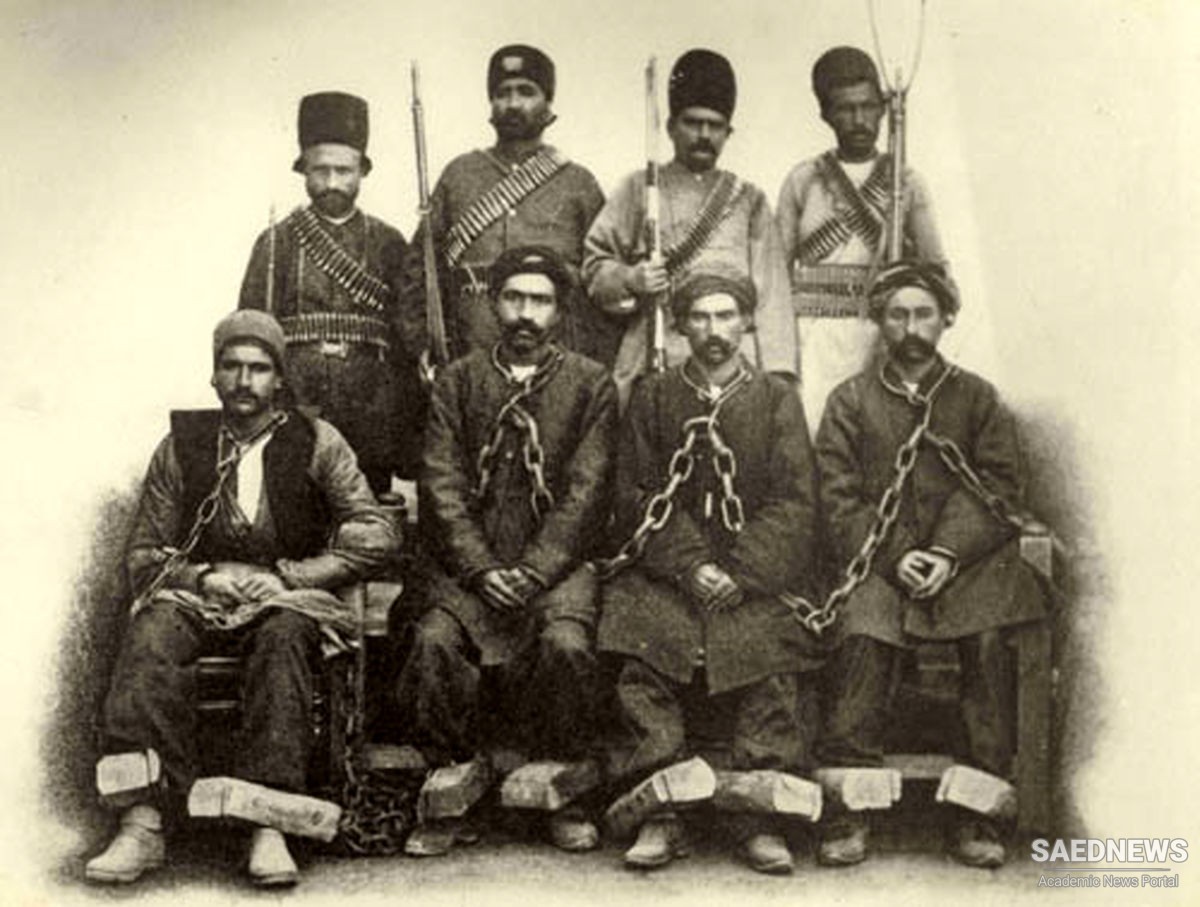The country solidified its contemporary boundaries during this period while its ethnic Persians, Azeris, and other peoples increasingly adopted an Iranian national consciousness. The Qajars’ greatest challenge, however, was to avoid entanglements with Russian and British imperialist policies, and war was the result of the Iranian monarchs’ repeated failures to do so. Qajar pretensions to retain some of Iran’s imperial glory contributed to these confl icts, which, in turn, led to cycles of humiliating concessions and debts. By the turn of the twentieth century, the Qajar rulers had shown themselves to be too greedy, lazy, and unimaginative to lead Iran out of the trap of foreign domination.
The history of Iran’s armed forces through much of the fi rst six decades of the nineteenth century was one of laudable att empts at military modernization and reforms to meet the threats posed by Russia and Great Britain. But, in each instance, the Qajar reforms proved insuffi cient and could not keep pace with improvements among the European militaries. Politicization and corruption were rife and constantly undermined eff orts to put Iranian military professionalism on par with Western armed forces. Even worse, the Qajars set dreadful precedents in the maltreatment of Iranian fi ghting men and wasted the benefi ts of their demonstrated qualities of bravery, resourcefulness, and a dogged ability to endure hardship. Toward the end of the century and into the next, the Iranian monarchs essentially gave up on creating an eff ective national standing army and sought instead to enlist the aid of their former Russian foes, a move that contributed to domestic political currents that left the Qajar armed forces an empty shell.
The first Qajar shah, Agha Muhammad Khan (r. 1794–97), was a eunuch general who seized the throne of Iran and became a cruel and brutal ruler. Muhammad Khan had been castrated as a boy at the order of Adil Shah, Nader Shah’s successor, to prevent him from becoming a political rival. Karim Khan, the founder of the short- lived Zand dynasty, also kept the young eunuch prisoner for many years aft er collaborating in the murder of Muhammad Khan’s father. Not surprisingly, the future shah swore a blood feud against the descendants of Nader and Karim, and his rise to power was marked by mass murders celebrated with pyramids of skulls and the mutilation and enslavement of his surviving enemies and their families. In 1795 the last Zand ruler was betrayed and handed over to Muhammad Khan, who had him tortured, blinded, castrated, and fi nally murdered.
Qajar fighters then conducted a campaign of rape and pillage against the major Zand cities of Bam, Shiraz, and Kerman. In the latt er city, twenty thousand women and children were given to Muhammad Khan’s tribal warriors or were sold into slavery while the captured men were all robbed of their sight. Muhammad Khan’s last revenge was to have the remains of Nader Shah and Karim Khan disinterred. He brought their bones to Tehran, where he had moved the Iranian capital to be closer to the Qajars’ tribal grazing and hunting grounds. Muhammad Khan then reburied the two former rulers under the gateway of his palace so that royalty and commoners alike walked over their remains. Formally crowned shah in 1796, Muhammad Khan’s evil ways caught up with him, and he was assassinated the following year. Despite his short reign, Muhammad Khan initiated the process in which the Qajars, a minority Turkman tribe with no real power base in Iran, legitimized their rule by forming ties with other ethnic and social groups and manipulating them to work against each other.
The Qajars, like the Safavids, were Turkish in race but Persian in culture. They inherited the country at a time when Iran had been severely weakened by the wars, rebellions, oppressive taxation, and economic dislocations of the preceding century. The Qajars also came to power just as Iran was becoming the focus of Russian ambitions, British concerns over the defense of India, and the schemes of Napoleon’s France. Lacking any signifi cant standing armed forces, the Qajar shahs had no centralized administration and, in fact, were “despots without the instruments of despotism.” The dynasty stayed in power primarily by building enormous networks of kinship and alliances that they reinforced with grandiose titles and honorifi cs to give military leaders a stake in Qajar society. The shahs sent princes out to rule the provinces to ensure loyalty to the state, and a contemporary complaint about the Qajars was that “everywhere in Iran there are camels, lice, and princes.” Despite this form of personal and patrimonial authority, the Qajars rarely ruled in areas beyond the major cities, where rural landlords or nomadic tribes dominated. Still an agrarian society, Iran’s isolated villages were left responsible for their own protection against nomadic tribes and bandits. For the most part, the Qajar shahs devoted their lives to enriching themselves. Muhammad Khan’s successor, his nephew Fath Ali Shah (r. 1797–1834), needed the wealth to support 158 wives, 57 sons, 47 daughters, and almost 600 grandchildren. He and his successors only halfh eartedly resisted the decay from within and the encroachments from without that marked most of the nineteenth century in Iran.


 Qajars and the Military Crisis: Weak Army and Royal Ambitions
Qajars and the Military Crisis: Weak Army and Royal Ambitions














































